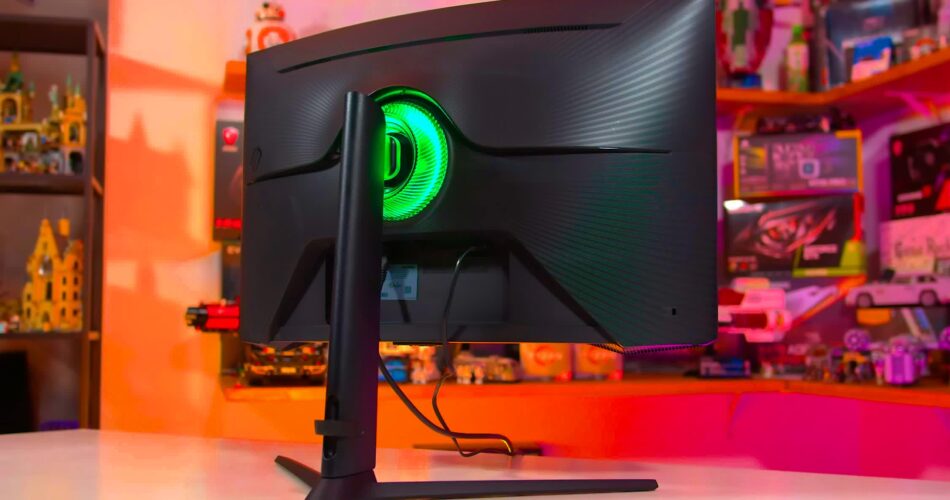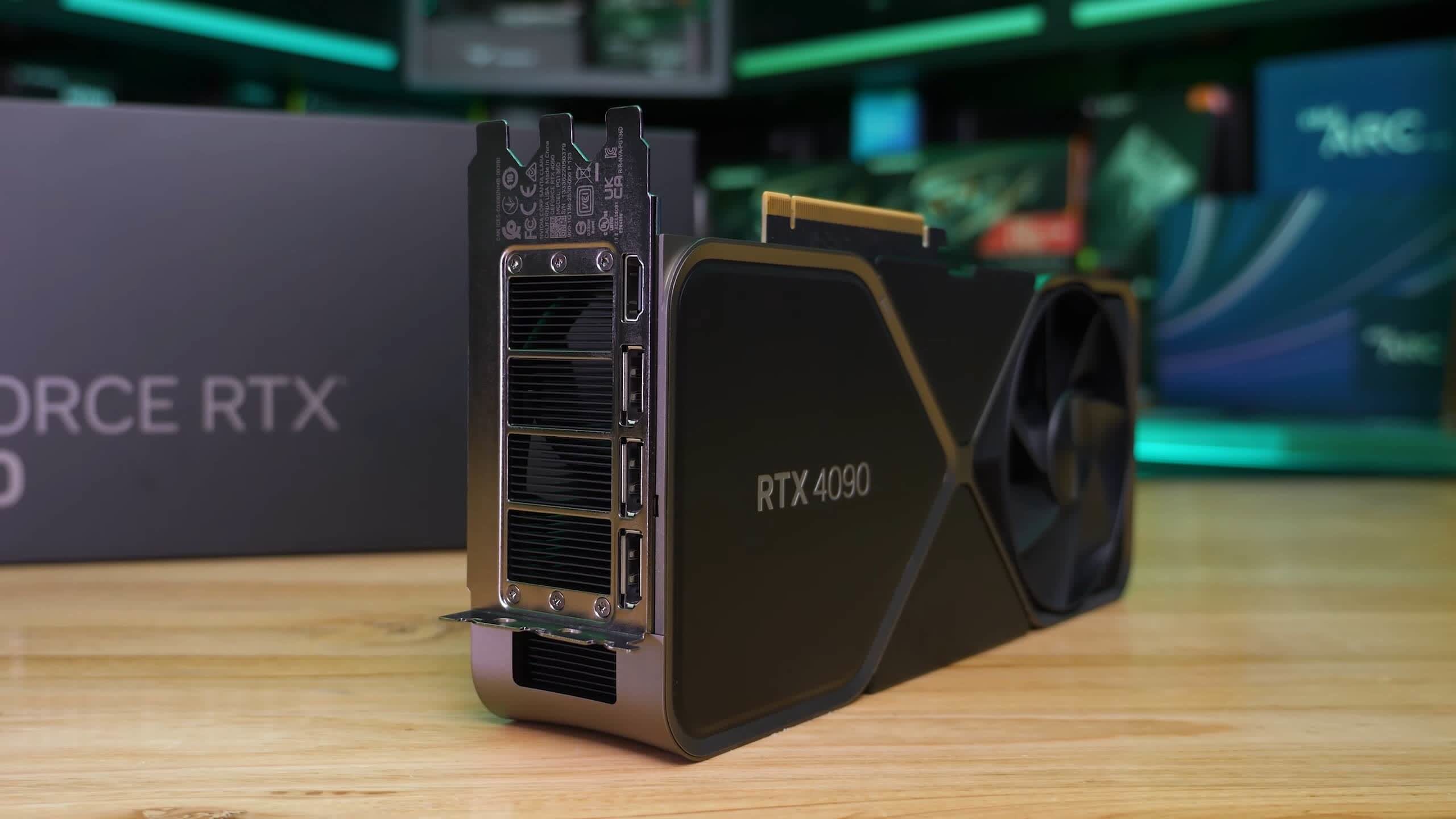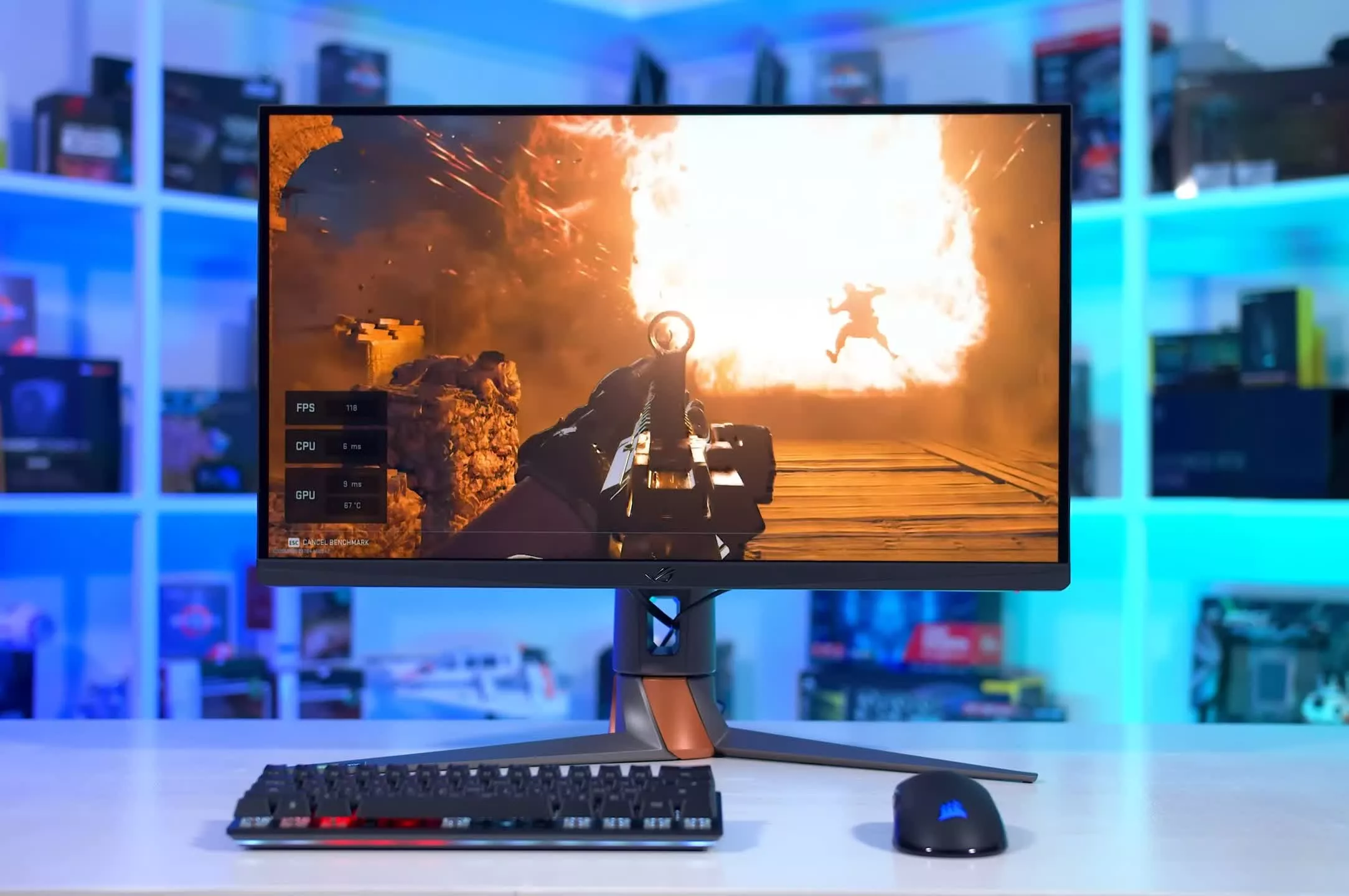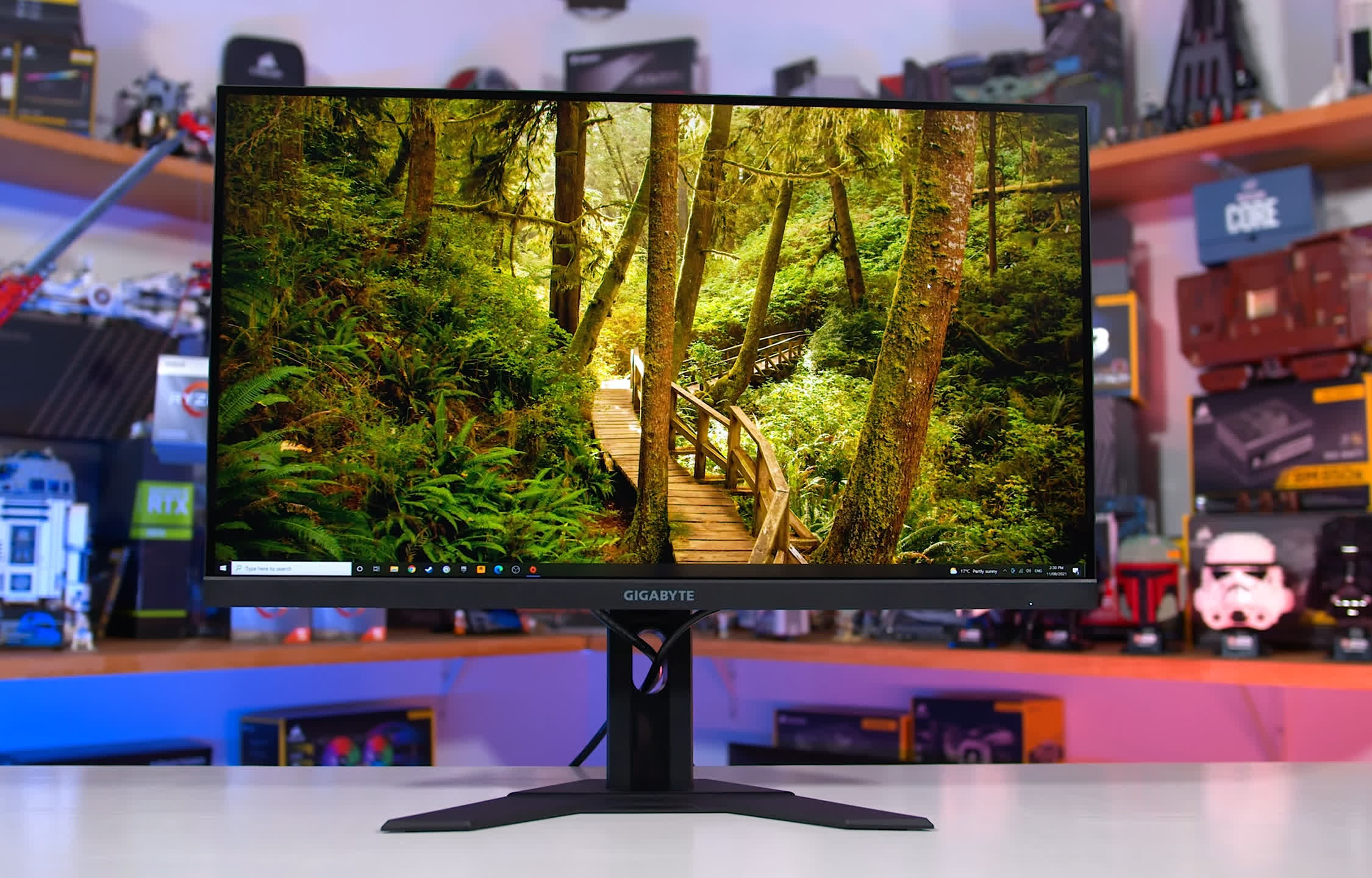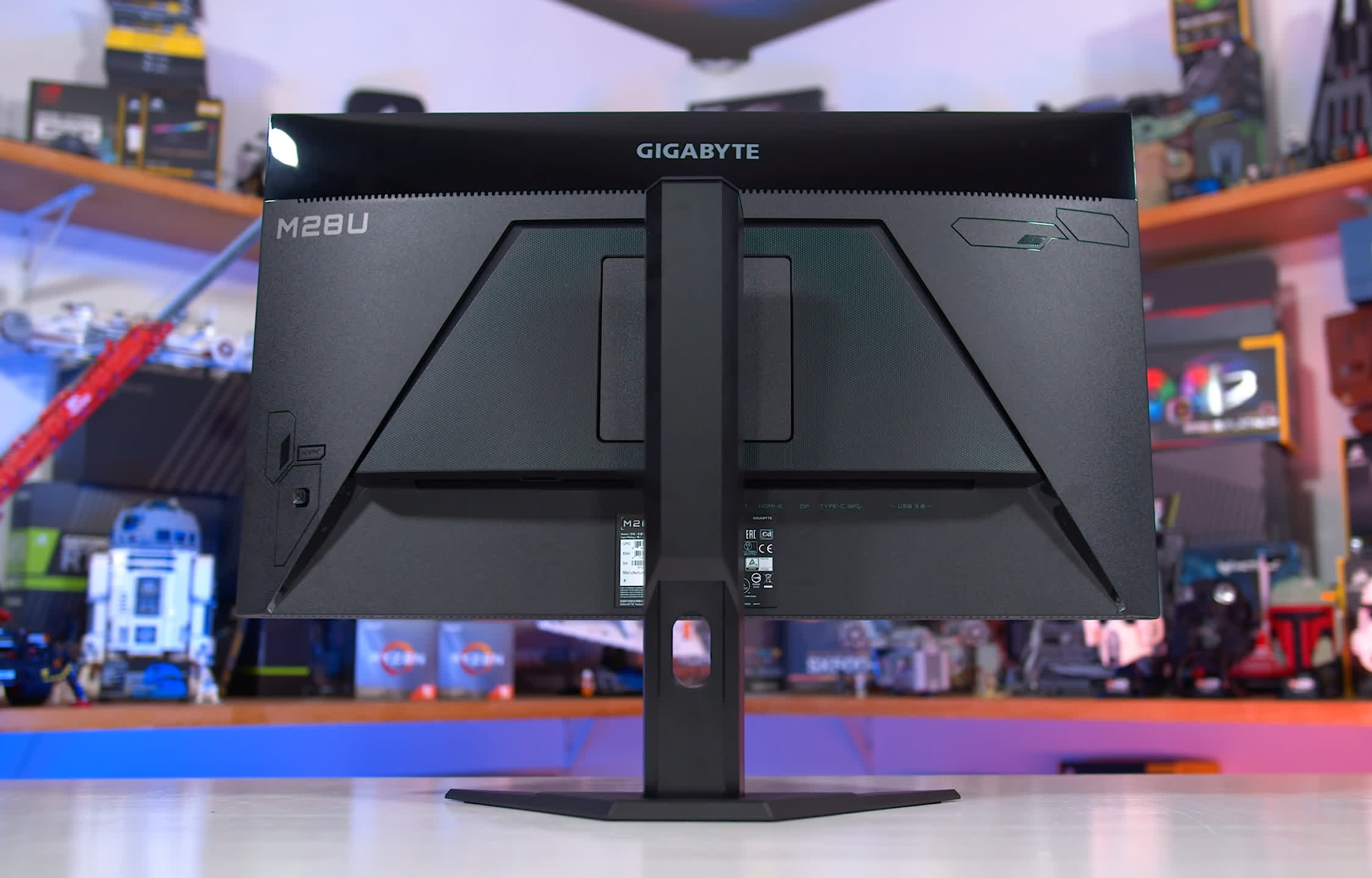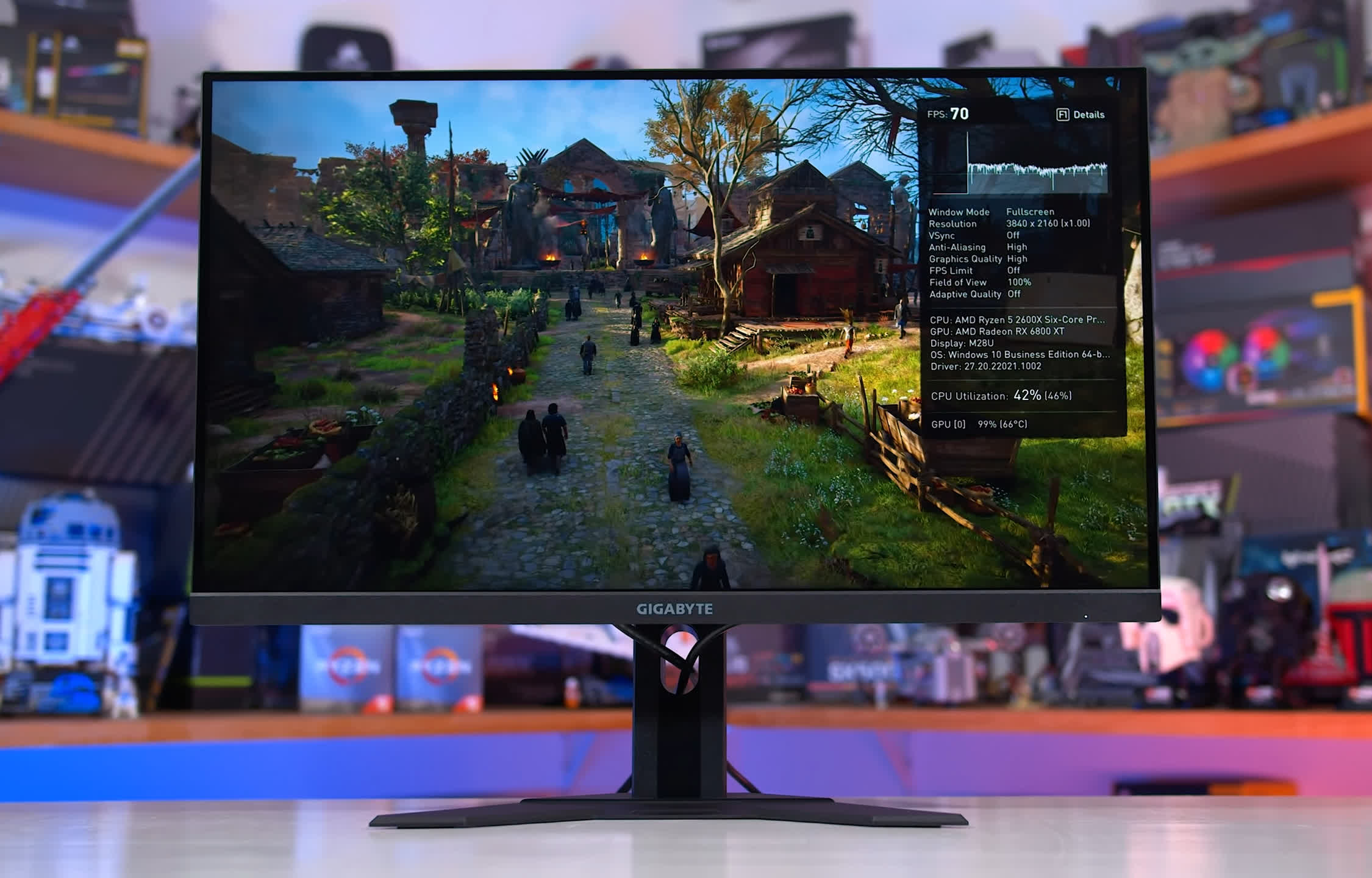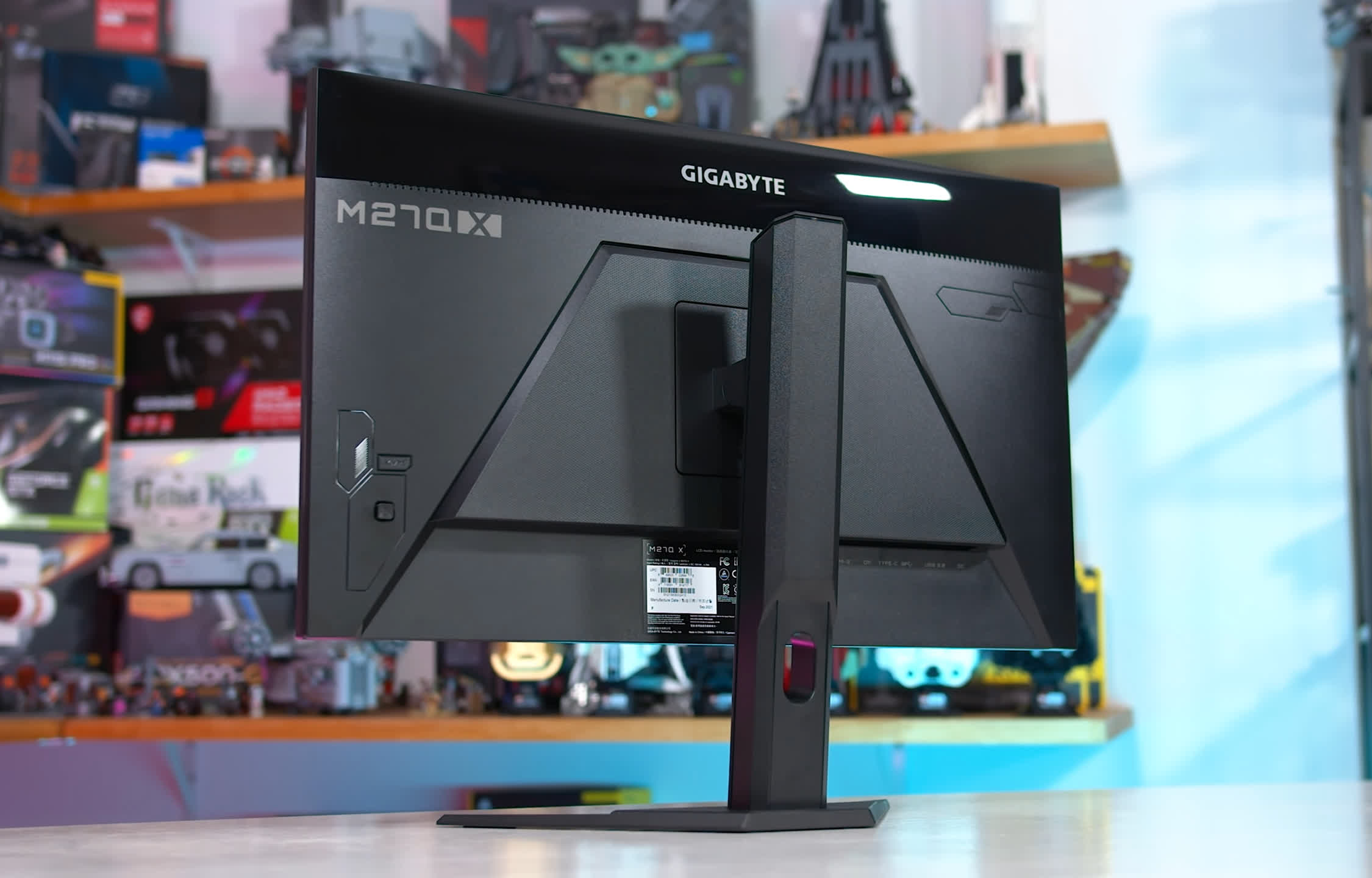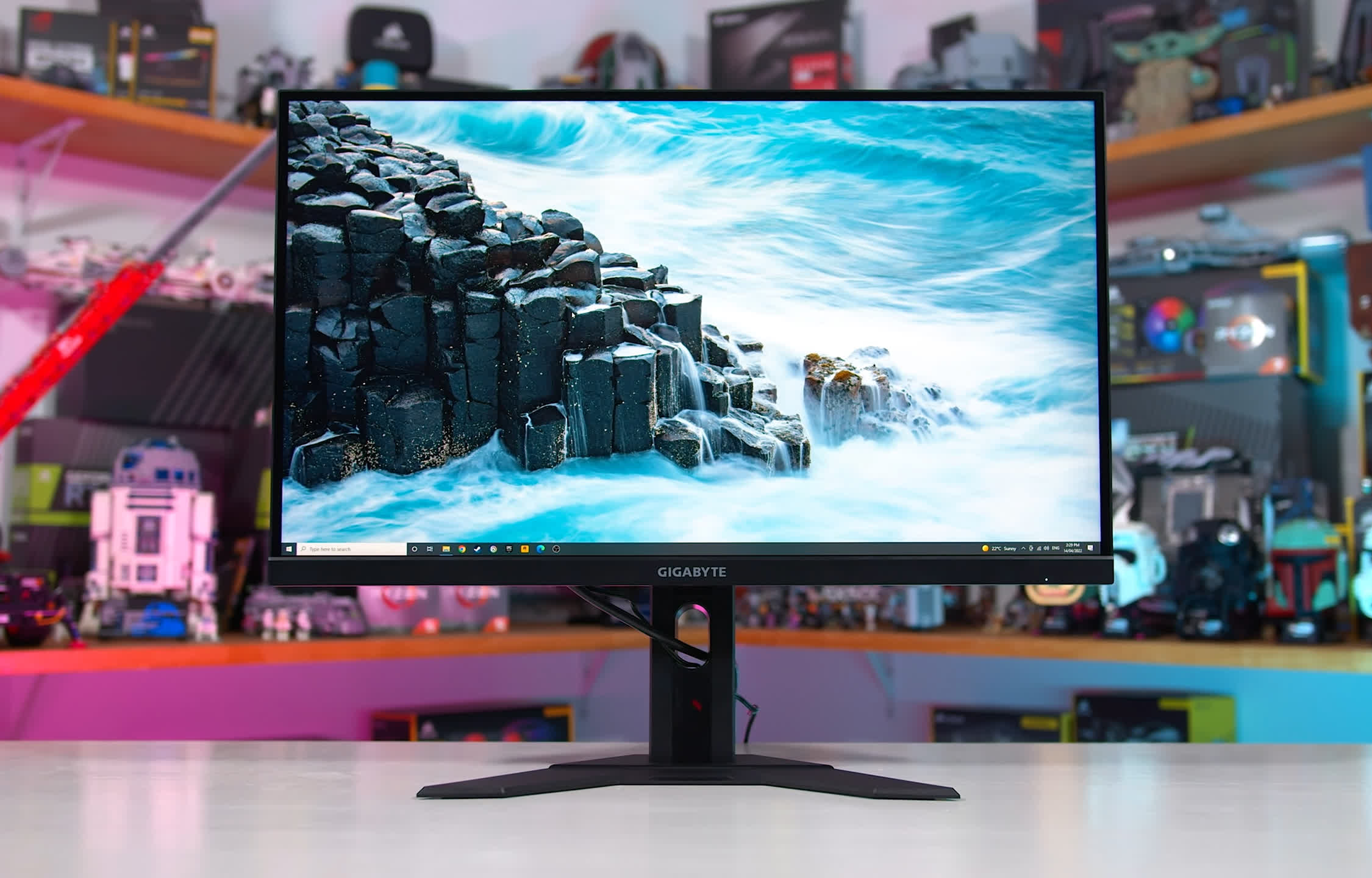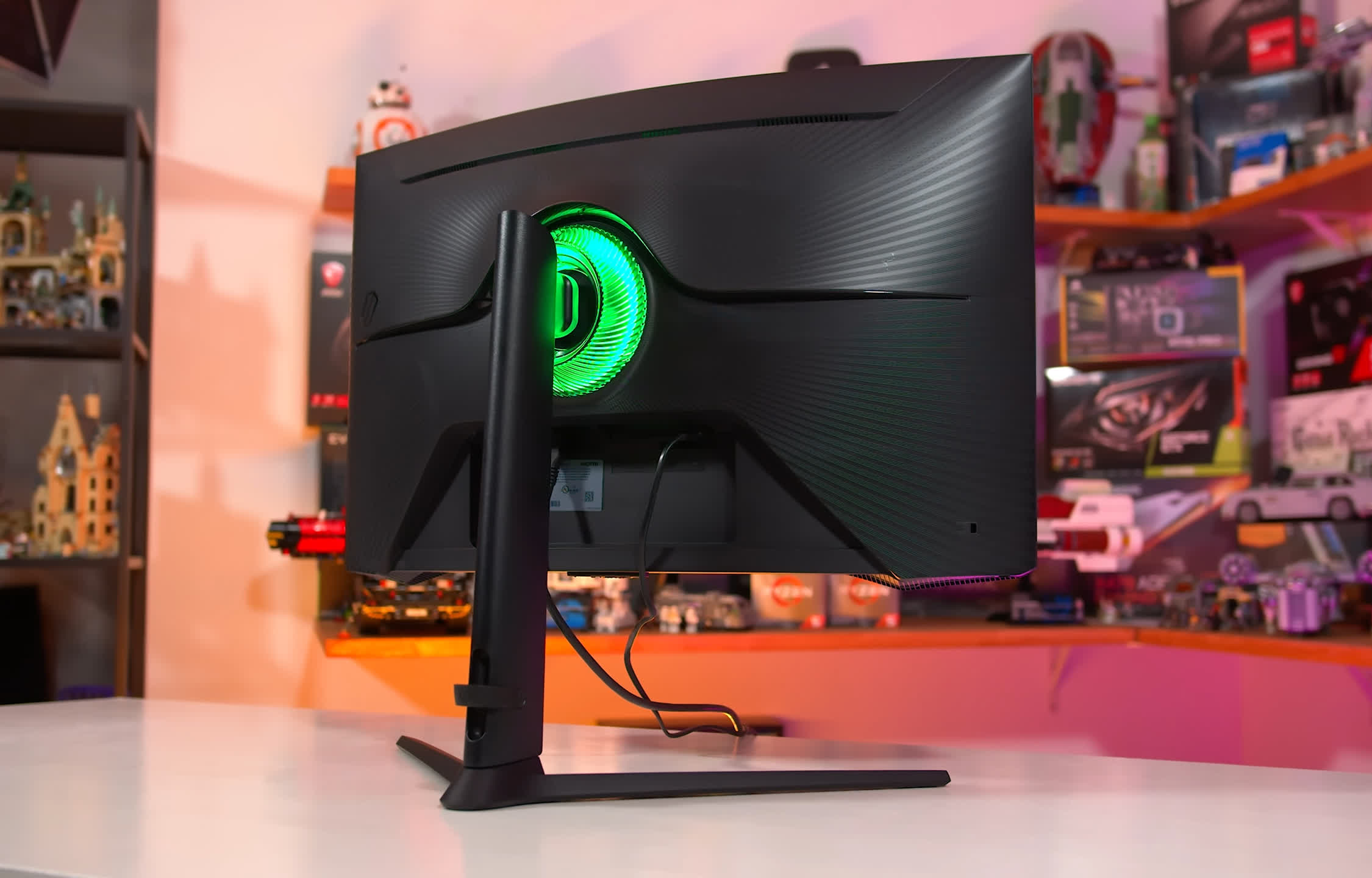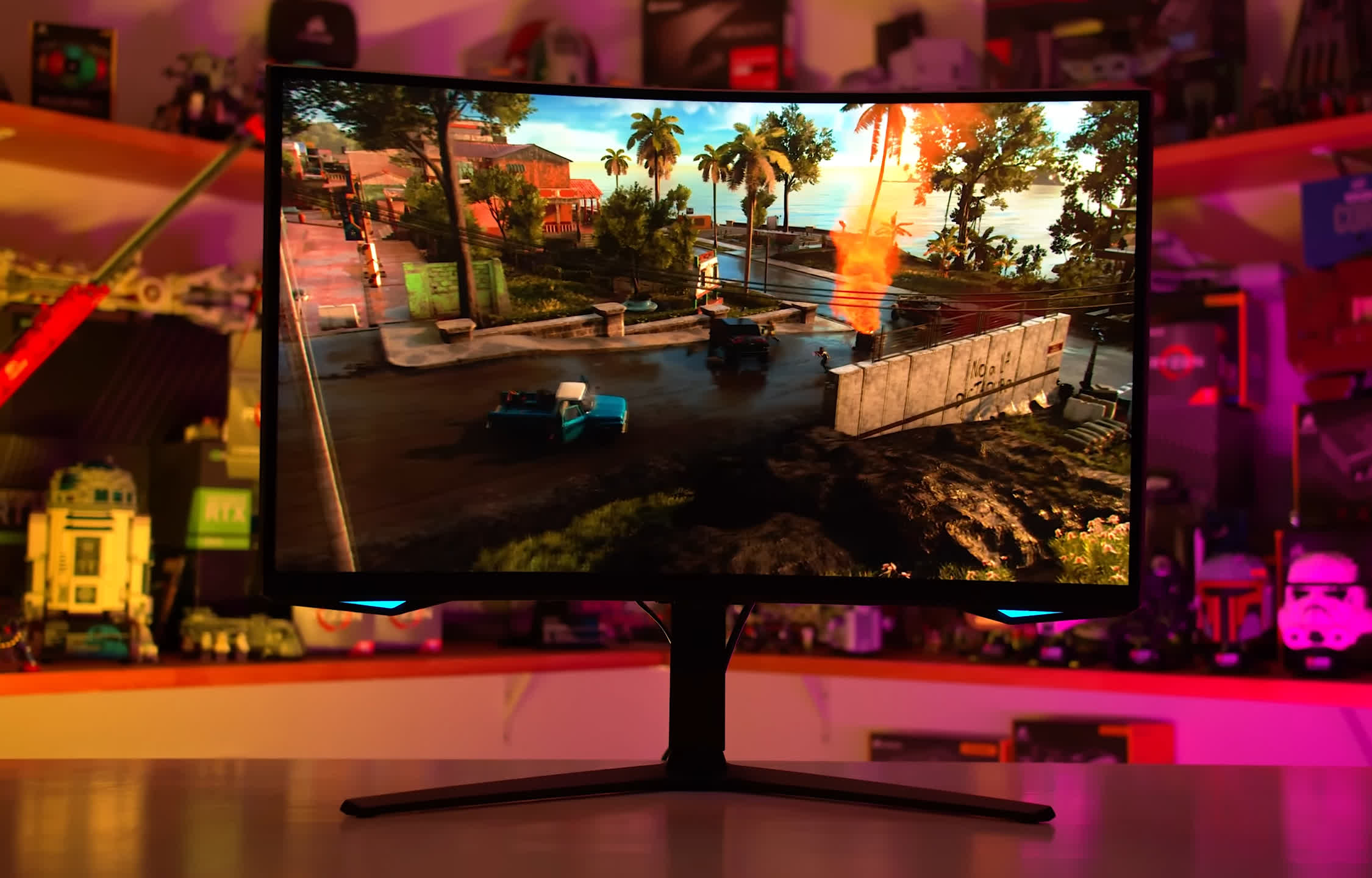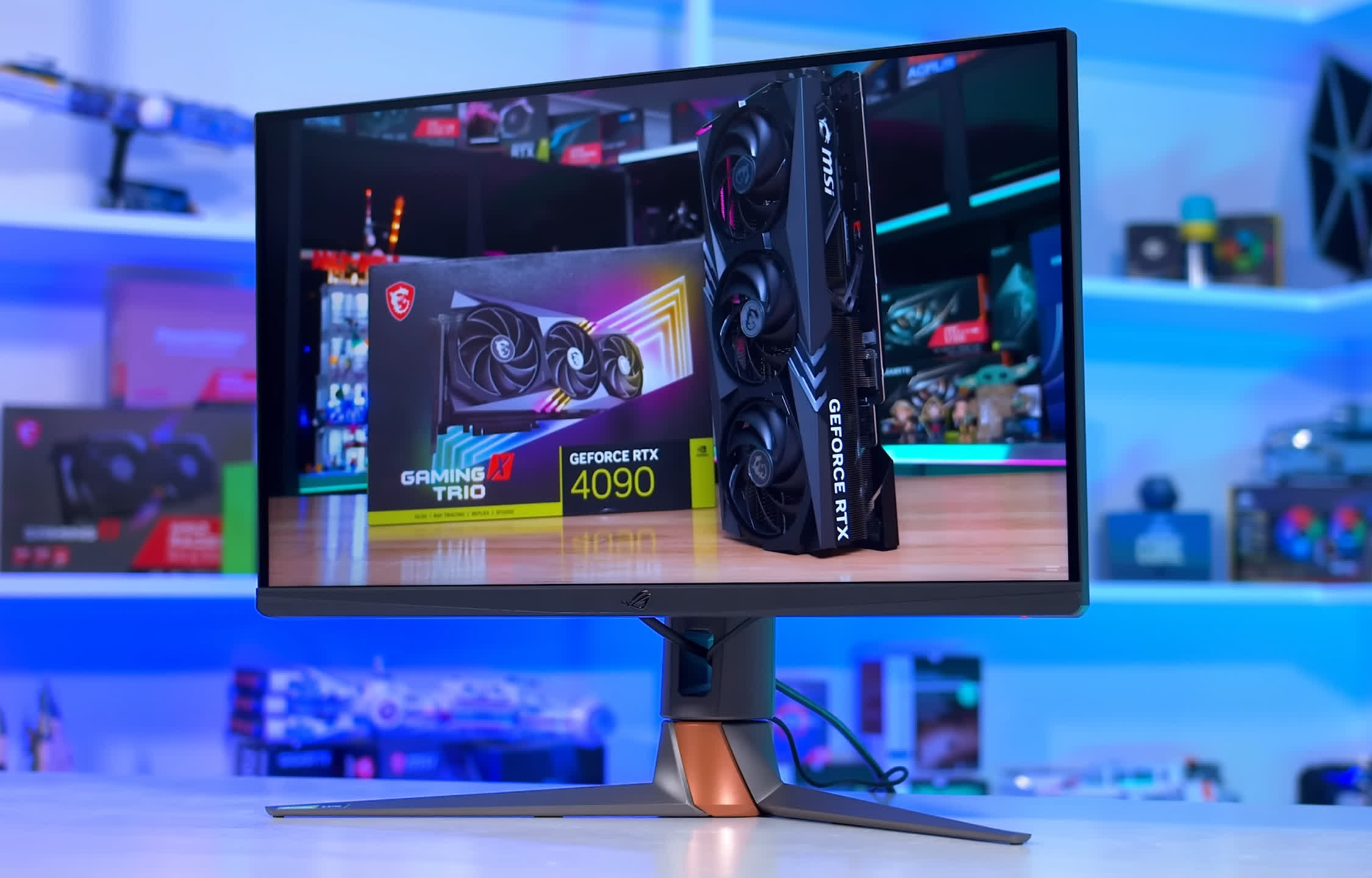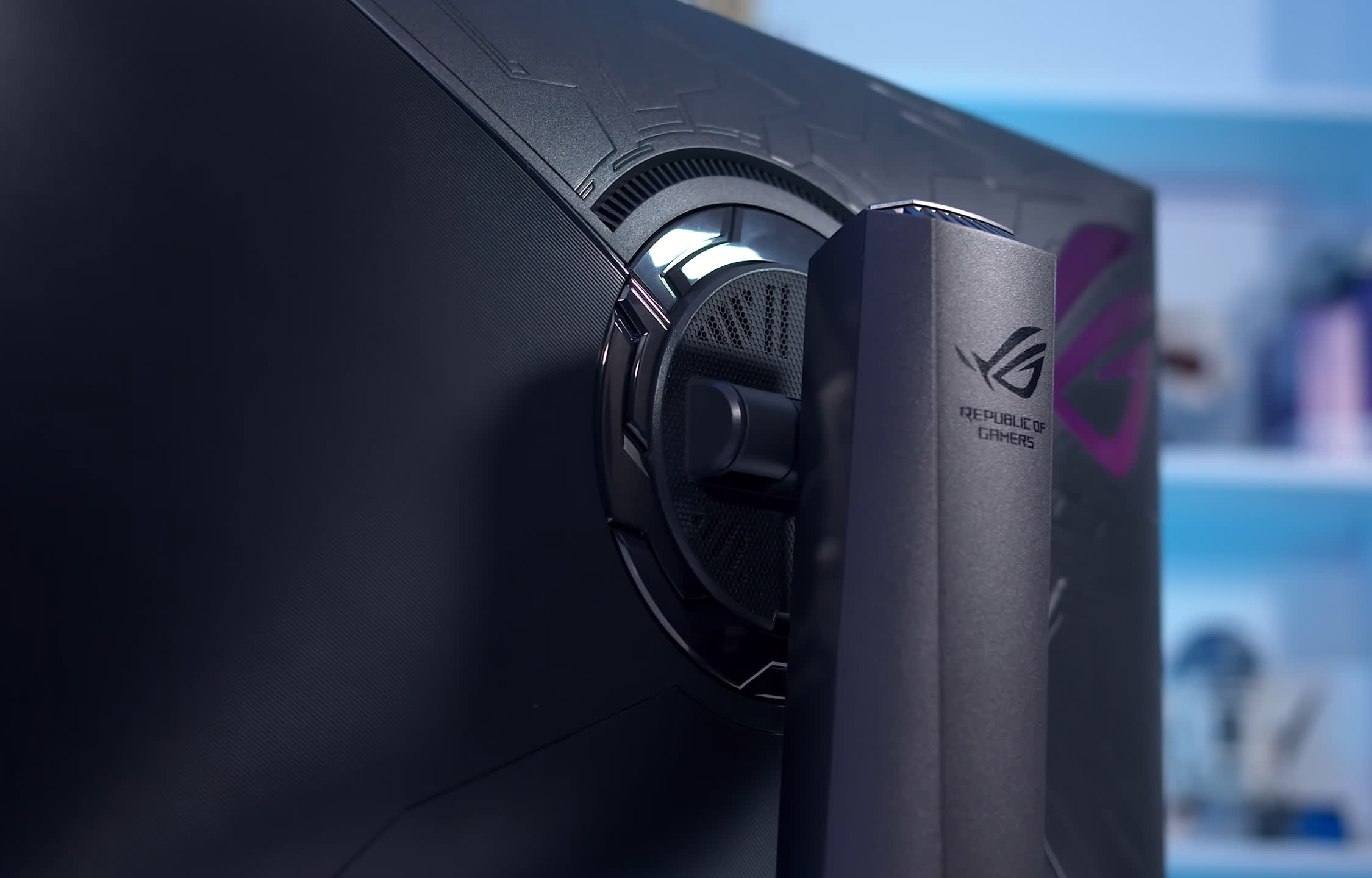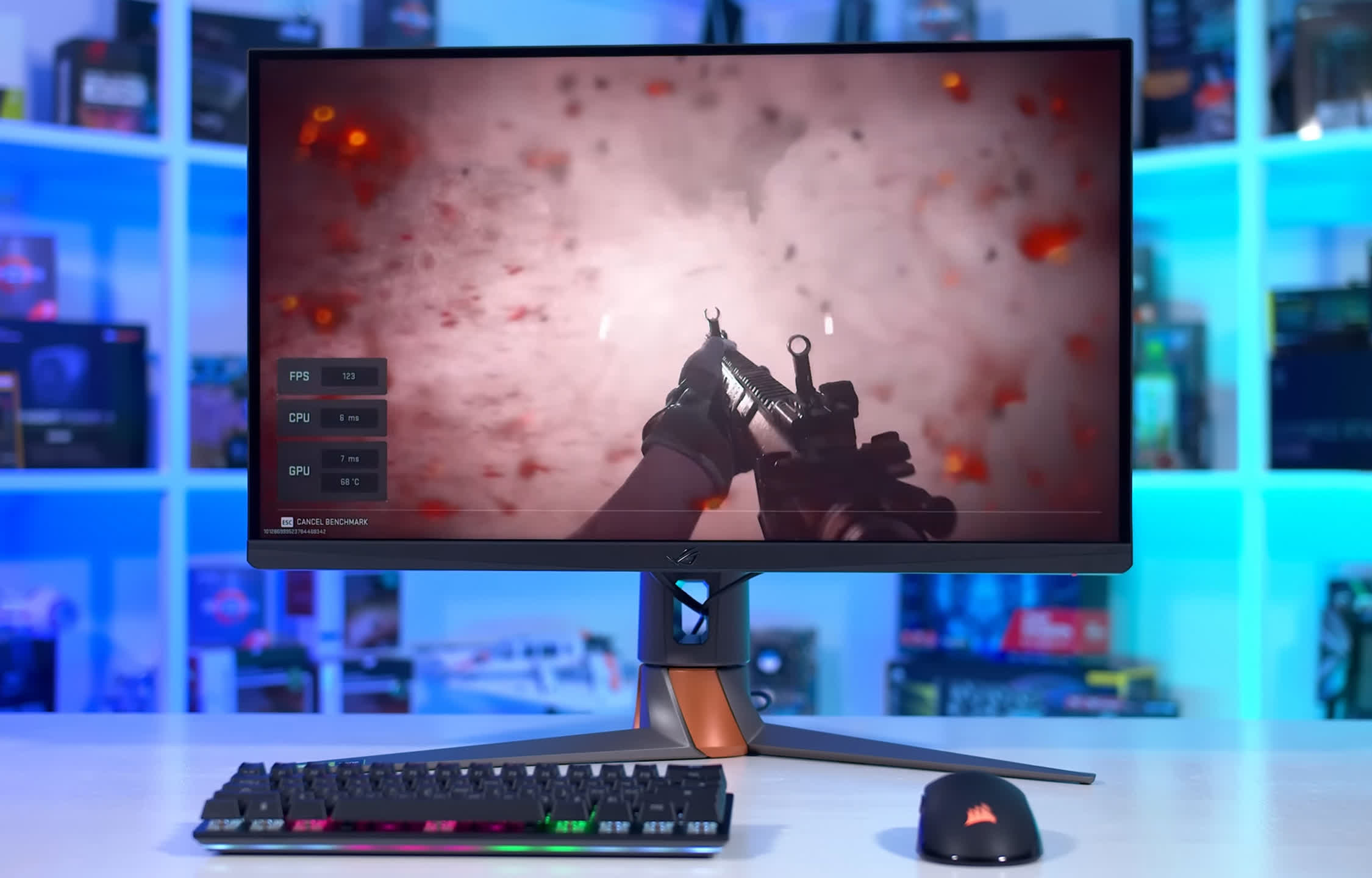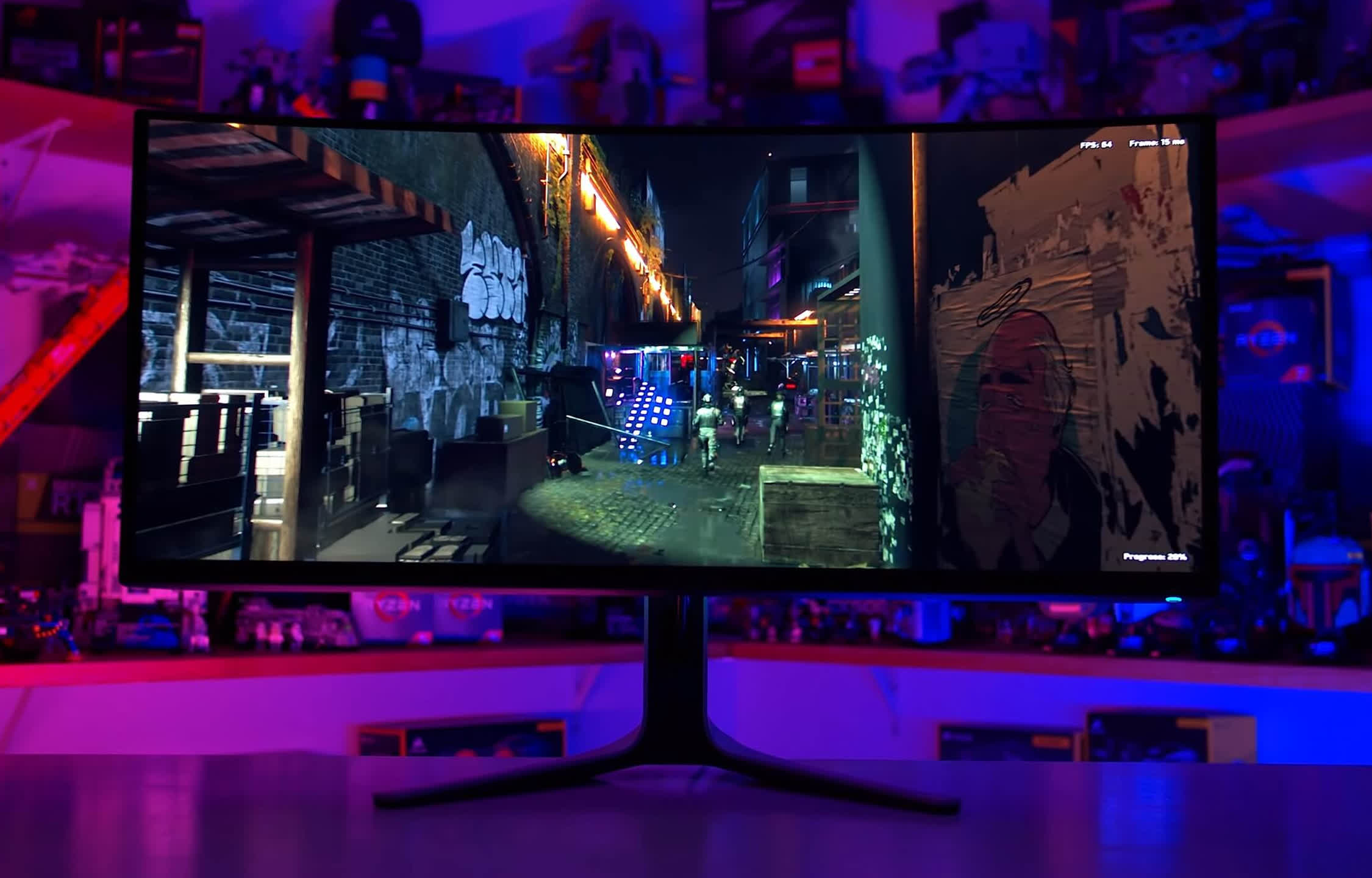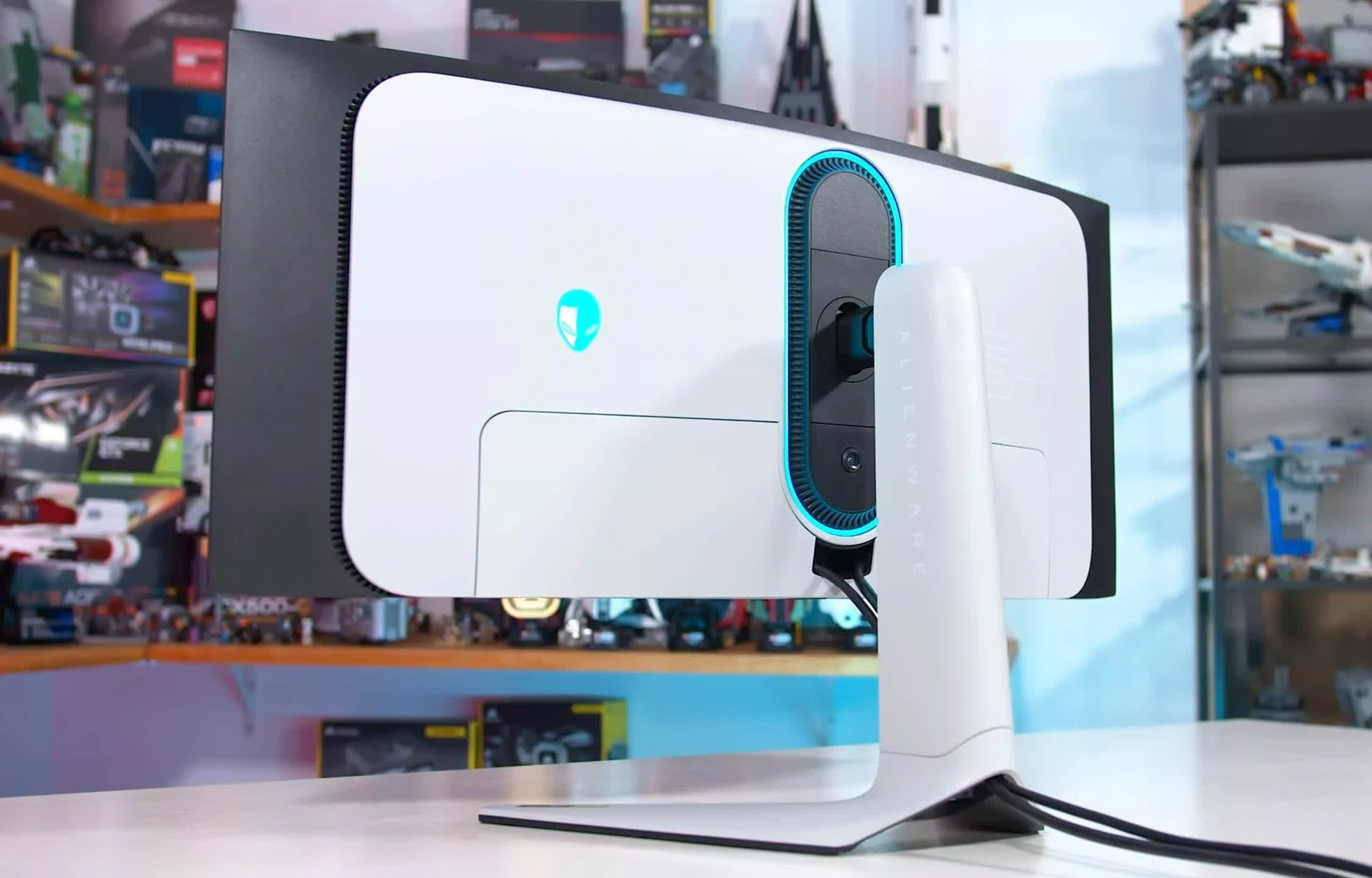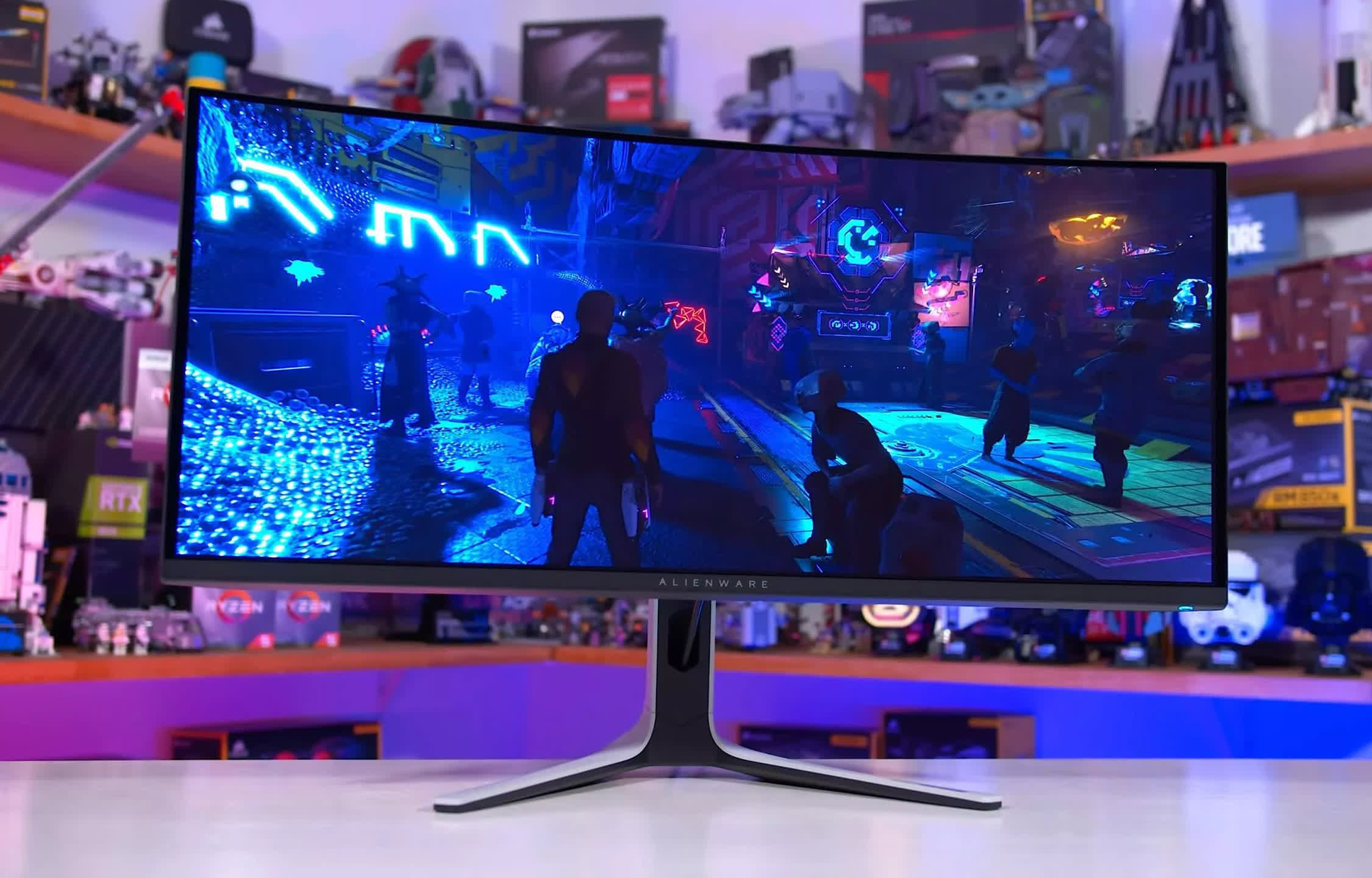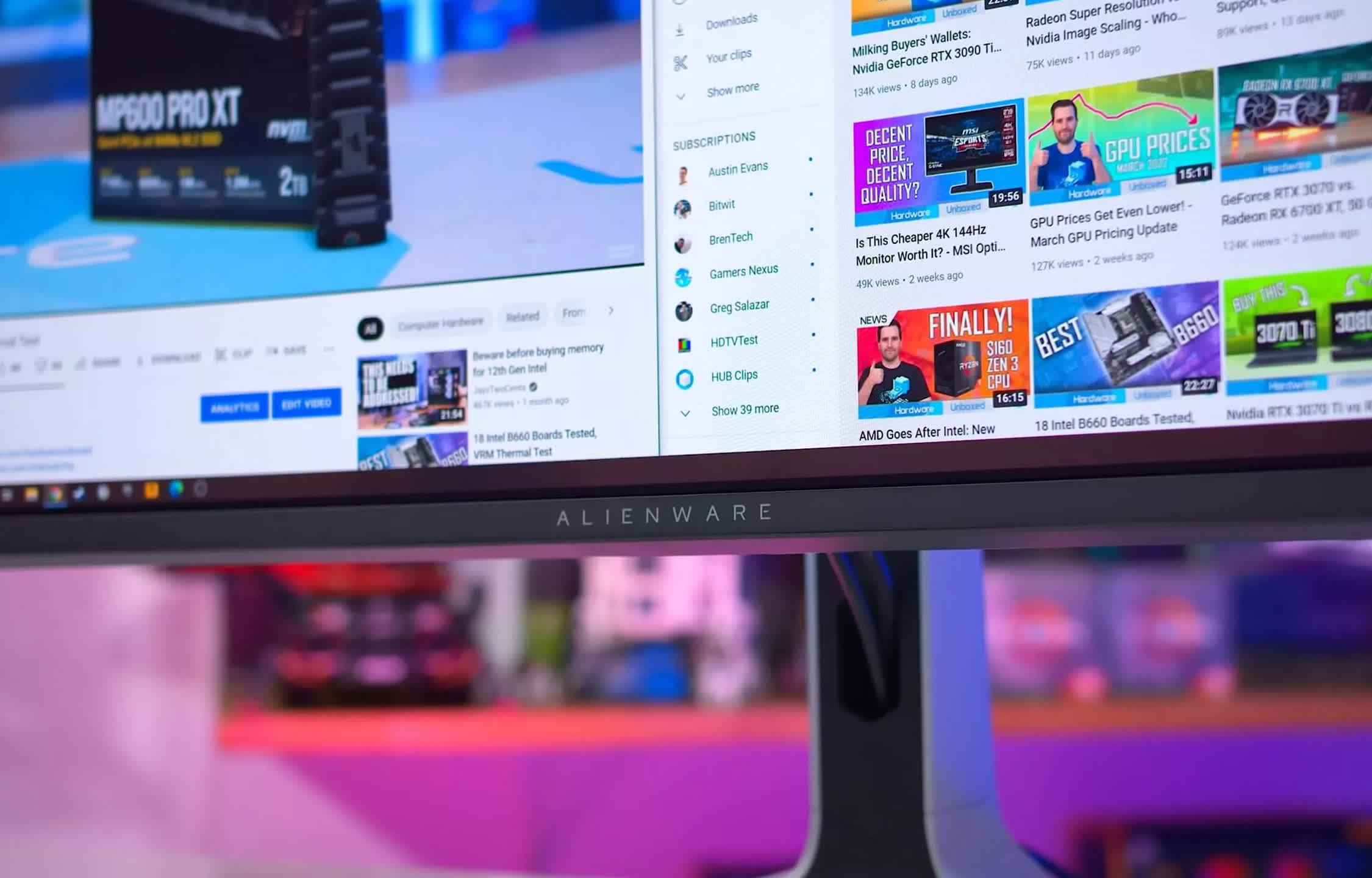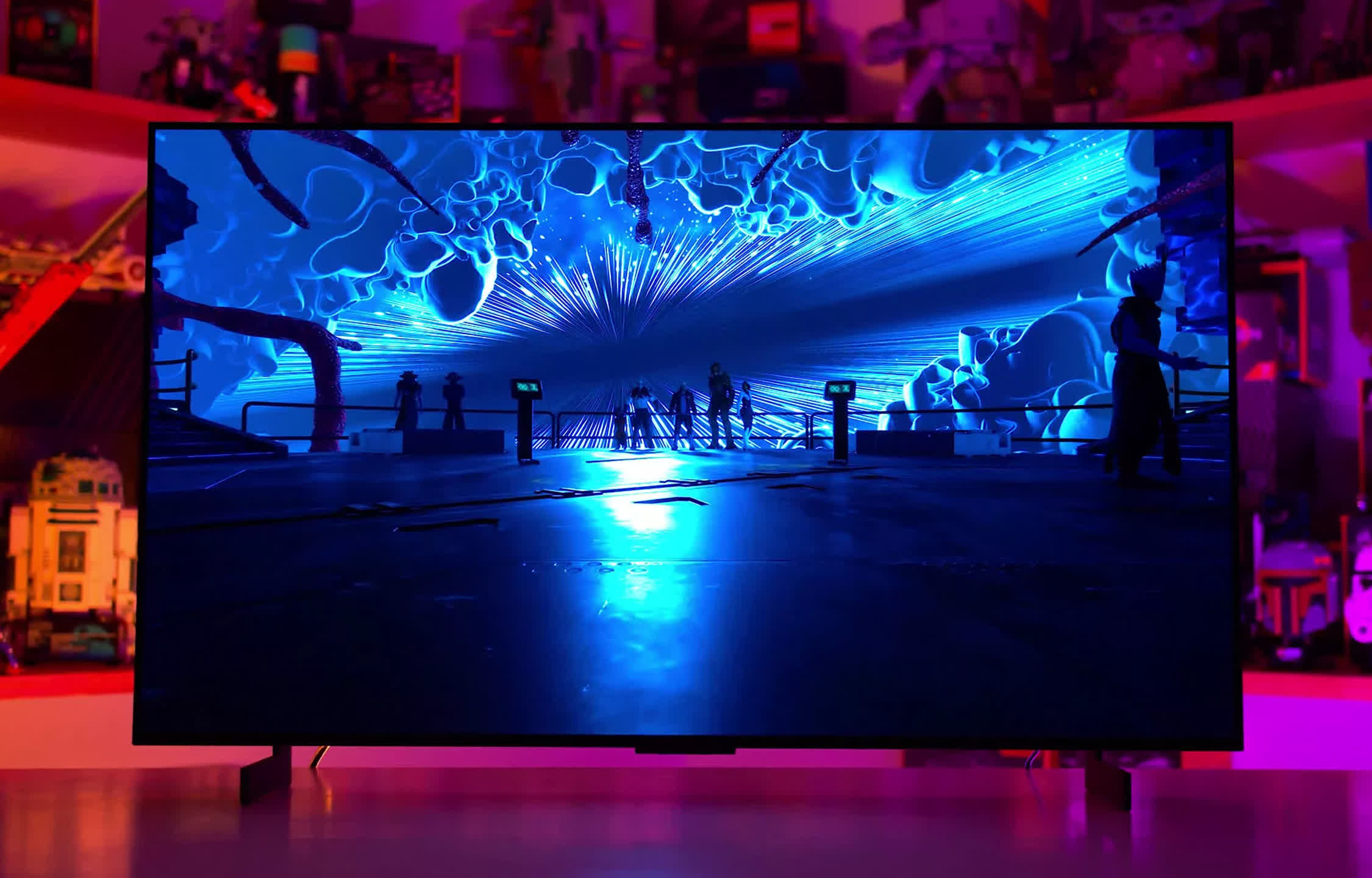If you’re upgrading to one of the newly released flagship GPUs from AMD or Nvidia, then you probably won’t want to be playing games on some crappy old monitor. These new graphics cards are so powerful that to harness the full benefits of what they have to offer, you’ll need a high quality display which will not only unlock new capabilities with these GPUs, but offer a fair bit of future proofing. So here are our top 5 monitor recommendations for people buying new GeForce or Radeon GPUs.
The first thing to do when deciding which monitors are the best for high-end GPU shoppers is to actually look at high-end GPU performance. We have detailed reviews over the GeForce RTX 4090 and RTX 4080, as well as the Radeon RX 7900 XTX and RX 7900 XT, so for more extensive thoughts we definitely recommend checking those out if you haven’t already.
If we look at the average performance these GPUs offer we can see some general trends. For example, at 1440p all four new high-end graphics cards will offer over 144 FPS in a 16 game sample on average, with the RTX 4090 pumping out a whopping 210 FPS, often CPU limited. Standard 1440p 144Hz to 165Hz monitors are really getting maxed out with these new GPUs, which makes newer displays more attractive when buying in this sort of class.
Of course, 1440p performance does vary between what sort of gaming you’re intending on doing, and the GPU you’ll be thinking of buying. But today’s competitive titles such as Call of Duty Modern Warfare II and Tom Clancy’s Rainbow Six Extraction (plus countless others) can easily be ran well in excess of 200 FPS at 1440p on these new GPUs using suitable quality settings, which makes high refresh rate gaming a reality not just at 1080p, but 1440p as well.
If you’re more of a single player gamer that prefers maxed out visuals then naturally frame rates will typically be lower, but even then, very respectable frame rates are still achievable. Cyberpunk 2077 hits over 150 FPS at 1440p using High Quality settings on an RTX 4090 without any upscaling, Dying Light 2 is also capable of 150 FPS or more on most of these new GPUs. Same with Assassin’s Creed Valhalla which averages 180 FPS using Very High Quality settings at 1440p on an RX 7900 XTX. Of course, ray tracing changes this to some degree, though with DLSS you’re still looking at over 100 FPS in many titles using an RTX 40 series GPU.
As for 4K gaming, these new GPUs are a bit of a beast for that. The RTX 4090 averages 142 FPS at 4K across our 16 game sample, while the RX 7900 XT and RTX 4080 both hit around 110 FPS on average. Those are big numbers for 4K gaming, showing that this generation is truly capable of using the high refresh rate capabilities of modern 4K monitors.
In fact, the performance on offer here is rather crazy for 4K competitive gaming, often delivering over 150 FPS on average – and while we’d probably stick to 1440p over 4K for that sort of gameplay, people that like to dabble in all sorts of games will be very pleased with performance even if you choose to go 4K. And of course, there are many single player titles that can comfortably exceed 60 FPS on a new GPU, with the RTX 4090 in particular offering a consistent high refresh experience.
This sets the baseline performance expectations. Over 200 FPS is possible at 1440p especially in competitive games, while high refresh rate 4K is also a reality across a variety of titles. So what monitors pair best with that sort of processing power? Here’s come our recommendations…
#5
Gigabyte M28U – 28″ 4K 144Hz
Coming in the fifth spot is the Gigabyte M28U, which is a 28-inch 4K 144Hz IPS gaming monitor that offers a really solid experience across several performance areas. It’s not the highest end monitor by today’s standards, as it doesn’t deliver any meaningful HDR, but if you’re thinking of upgrading to a new GPU to access 4K gaming for the first time, then this is a great starting point – and it offers a suitably high refresh rate to handle what new GPUs are capable of.
The M28U has very good response time performance, with an average transition in our testing of 4ms at 144Hz. It also has very good performance across the refresh range, so for those using adaptive sync variable refresh rates, you don’t need to tweak overdrive settings to get the best experience.
This IPS monitor delivers speed in the ideal range for the latest generation of IPS panels, so there’s no funny business going on here for motion performance, and this is complemented with great backlight strobing that works alongside adaptive sync. We also get HDMI 2.1 support, which is essential when buying a new 4K monitor and it offers reasonable (though not ideal) compatibility with game consoles if you also have them.
Gigabyte’s monitor also offers solid color quality reproduction, thanks to its IPS panel, so viewing angles are excellent and it packs a wide color gamut – though not as wide as the best monitors of today. Factory calibration is above average, there’s a very good sRGB mode for everyday use, and contrast is typical for an IPS panel. To top it all off, Gigabyte includes a KVM switch and a height adjustable stand which are neat feature additions.
While we’d recommend the M28U for most people looking for a good, affordable 4K gaming monitor of this size, the reason why it doesn’t feature higher in this list is due to its lack of HDR hardware. To get true HDR in a product with similar specs you’ll have to fork out several hundred dollars more. There are some gamers that aren’t that interested in HDR though, in which case the M28U is a great buy.
The M28U is available pretty consistently for $530 these days, which is a great price and makes it usually the most affordable 28-inch monitor that uses this Innolux panel. There are a few similar products out there such as the MSI MAG281URF and Samsung Odyssey G7 S28 but they’re often more expensive, so we’d just get the M28U.
#4
Gigabyte M27Q-X – 27″ 1440p 240Hz
The Gigabyte M27Q-X takes the fourth spot, and this is the most affordable monitor in this list but it’s such a compelling option if you want a new display for high-end 1440p gaming that we had to include it.
The M27Q-X offers a 240Hz refresh rate, 27-inch panel size and IPS technology at a low price point of just $420, making it an excellent bang for buck option to pair with new GPUs that can consistently deliver over 200 FPS at this resolution.
The M27Q X isn’t the overall best 240Hz monitor that we’ve tested, that accolade would go to the Asus ROG Swift PG279QM. But the Asus option costs $750, while the Gigabyte is just $420 and for roughly half the price you get remarkably close to the best option in this particular category.
The bang for buck factor is off the charts here given that these sort of specs used to start at $650+ earlier this year – and even if you were buying a high-end GPU and have heaps of money to spend, we still find it hard to justifying buying the PG279QM which simply isn’t $300 better.
The M27Q X offers a fast response time experience on par with today’s good quality IPS LCD panels. When you combine response speed with a high refresh rate, you get great motion clarity making this monitor highly suitable to competitive multiplayer gaming, but with the versatility of a decent resolution for other types of games as well.
The only downside is the lack of a single overdrive mode experience, which its more expensive competitors can offer depending on the model. But with the latest GPUs often pumping out bulk frames at 1440p, you can typically set the monitor to the settings best optimized for high refresh rates, making this a non issue.
Gigabyte also provides good color quality including a nice wide color gamut, decent uniformity, great viewing angles and a respectable job of factory calibration as far as gaming monitors go. We always like when a monitor delivers a good balance of performance across all categories and that’s what the M27Q X provides. Like the M28U we talked about before, there’s no meaningful HDR experience here, perhaps making this more of a competitive focused monitor.
#3
Samsung Odyssey Neo G7 – 32″ 4K 165Hz
In the number 3 spot is the best standard desktop 4K HDR gaming monitor and the best option for most people that want an excellent 4K experience with their new GPU: the Samsung Odyssey Neo G7.
This display combines a 32-inch 4K 165Hz curved VA panel with a 1,196 zone full array local dimming backlight to deliver excellent HDR performance with stunning bright highlights and plenty of contrast in dark scenes.
If you were considering 4K gaming on your new graphics card then this pick is an upgrade on the Gigabyte M28U, offering true HDR and faster motion performance, though naturally this comes at a higher price.
But for gamers that want the additional visual benefits of HDR and are willing to pay for it, Samsung’s Neo G7 is a great choice. It’s also an LCD meaning we get a normal subpixel structure, no risk of burn-in and plenty of SDR brightness, which are all weaknesses of the alternate HDR technology choice: OLEDs. This gives the Neo G7 additional versatility and suitability as a desktop productivity monitor, though its curve is still geared heavily towards gaming and content consumption.
When you factor in its normal 32-inch screen size, we think the Neo G7 is a good choice for many people, whereas todays gaming-suitable 4K OLED options are all pretty large. We were impressed with its response times, it has good color quality, and its VA panel delivers excellent native contrast that assists with the HDR experience as well. We wouldn’t recommend the 240Hz model, the Neo G8, due to pixel inversion issues, but this is effectively a non-issue on the Neo G7 which performed well in our testing.
Something to consider about buying a Neo G7 is that you probably want to wait for a discount. While the MSRP is $1,300 – quite a high price tag – we have seen it go on sale multiple times since launch, bringing it down to $1,100 or even $800 in the best cases. Obviously, at $800 it’s a fantastic deal but even $1,100 is pretty reasonable considering what this monitor offers.
#2
Asus ROG Swift PG27AQN – 27″ 1440p 360Hz
The latest GPUs from AMD and Nvidia are so fast at 1440p for competitive gaming, often CPU bottlenecked, that it would be crazy not to recommend the highest refresh rate 1440p monitor on the market in the number 2 position. That’s the Asus ROG Swift PG27AQN, which is an excellent gaming monitor that finally delivers a super high refresh rate at a resolution that isn’t 1080p.
The PG27AQN is a 27-inch 1440p 360Hz IPS gaming monitor that offers seriously excellent performance including class-leading response times for an IPS LCD (and any 1440p monitor), extremely good motion clarity and input lag thanks to its stunning 360Hz refresh rate.
At this resolution there is no better product for smoothness and clarity which is perfect for competitive gamers that want to eek out every last drop they can, or just want an excellent experience that’s highly enjoyable.
On top of offering outstanding motion performance, the PG27AQN also comes with great factory calibration and decent color quality, this IPS panel is pretty decent and doesn’t have the drawbacks of the typical TN panels we often see for esports displays.
This also makes it well suited to other types of gaming, including single player titles, so for those that play both multiplayer and single player games there’s a lot to like here. The main drawback is the absence of true HDR, so buyers are sacrificing this for the extreme speeds of 360Hz.
While this is undoubtedly a great monitor, we would only recommend it to high-end gamers that have powerful hardware. You’ll need a fast system to access the refresh rate on offer, but also because the PG27AQN is very expensive at $1,050.
The Gigabyte M27Q X is a much better value product, but the PG27AQN is the better display which is why it ended up in the number 2 position.
#1
Alienware AW3423DW – 34″ 1440p Ultrawide 175Hz OLED
The Alienware AW3423DW takes the number one spot, offering the best experience for high-end GPU buyers and gamers that want the ultimate setup. Excellent HDR, elite response times, decent resolution, immersive ultrawide format, and a refresh rate suitable for today’s flagship graphics cards.
This monitor is a little more suited to gamers that want the best single player experience and best graphics extravaganza as opposed to our #2 pick in the Asus PG27AQN, but really you can have a great multiplayer experience on an OLED as well.
The 3440 x 1440 resolution is a bit more taxing than regular 1440p, so performance typically sits in between 1440p and 4K, but even 4K runs well on RTX 40 and RX 7000 GPUs, so that won’t be an issue.
The big selling point to this Alienware display is its use of QD-OLED technology. This means you get proper, true HDR performance thanks to OLED’s self-lit pixel structure that results in deep, zero-level blacks.
This QD-OLED panel can hit up to 1000 nits of brightness for small elements and just looks great displaying HDR content. Combined with its extremely fast response times (inherent to OLED technology), and fast 175Hz refresh rate (or 165Hz if you get the DWF variant), there is no better monitor on the entire market for HDR gaming right now. The motion performance is insane and rivals many 240Hz LCDs for clarity.
Of course, aside from HDR gaming it’s also a very capable SDR gaming monitor as well, and despite featuring OLED tech, it doesn’t have some of the drawbacks we’ve seen from other OLED displays.
In particular, full screen brightness of 240 nits is usable in most rooms (though not amazing), and there’s no annoying features like automatic brightness limiters enabled when using the SDR mode. Dell also mitigates the anxiety over OLED’s tendency to burn-in with a 3-year burn-in warranty.
However there are some drawbacks which do restrict the capabilities of the AW3423DW to content consumption. The triangle-RGB pixel structure is not great for text clarity and the screen coating isn’t ideal. But for gaming, most of these factors are not a major consideration, which still makes it an excellent product and is our top choice for buyers today.
Of note, a new Alienware AW3423DWF (DWF model) recently launched and they’re basically the same monitor with a few slight differences. The removal of the Nvidia G-Sync module in favor of a more traditional scaler drops the price of the DWF model by $200, from $1,300 to $1,100.
One Honorable Mention
While those 5 displays are our current top options for new high-end GPU buyers, we do have an additional noteworthy mention to make. The LG C2 OLED is an excellent choice for people that want a 4K OLED panel for HDR gaming, though its lower 120Hz refresh rate and massive screen size (at least 42 inches) don’t make it as suitable to everyone’s gaming setup.
We do think the LG is in many ways a better display than the Samsung Odyssey Neo G7, but somewhat behind the Alienware AW3423DW, though it’s more of a niche option and why it wasn’t part of our top 5.
Shopping Shortcuts:
Source link


